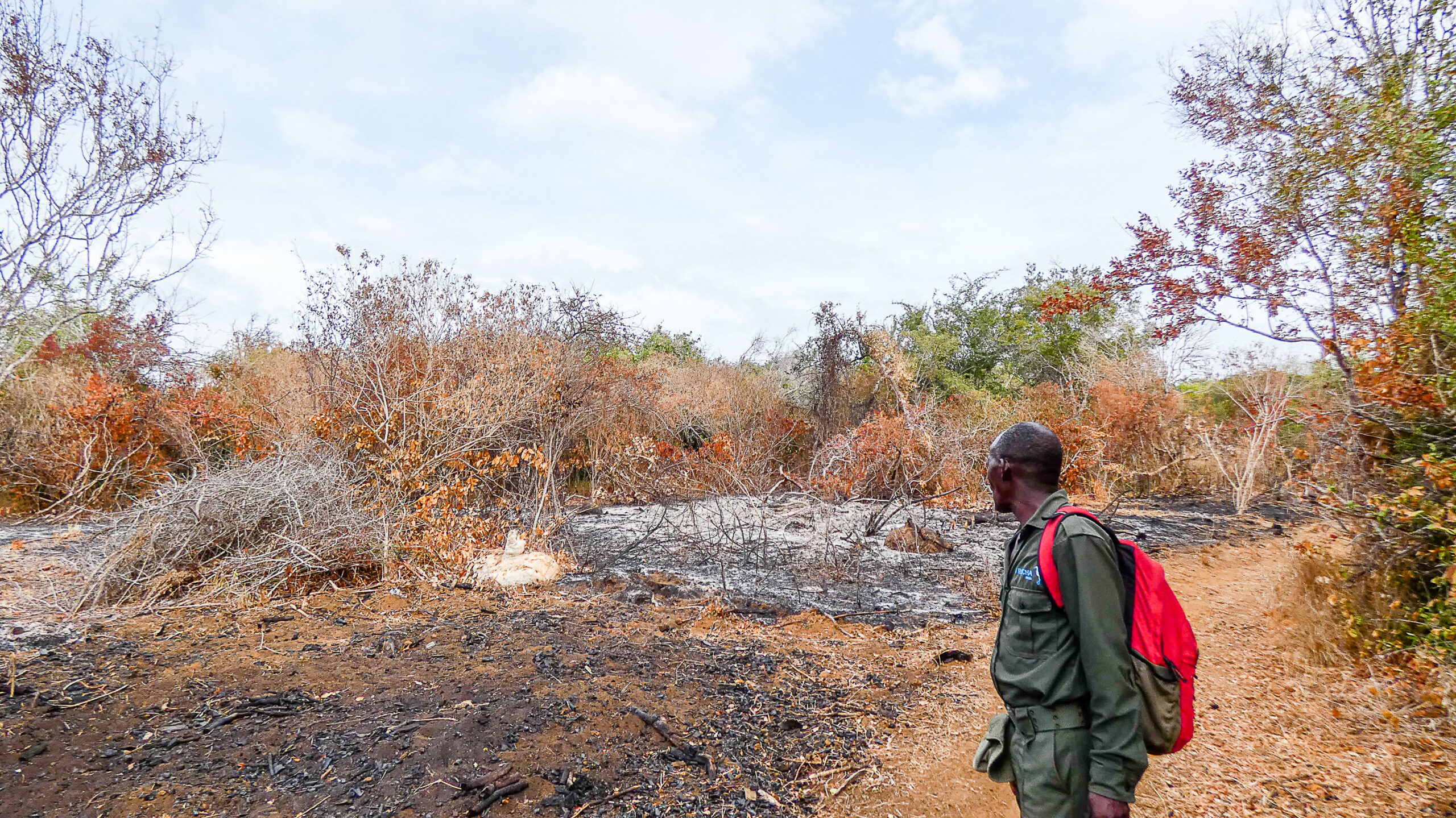Dakatcha, Threatened tree and habitat mapping
On the 3rd of March 2025; a bright Monday morning, that began quite on a high note as a team of four: Lennox Kirao, Cynthia Mwihaki, Humphrey Shume and Mwadime, prepared to leave for the Dakatcha Nature Reserve for what would turn out to be an extensive but exceptional data collection survey targeting some indigenous tree species currently considered threatened and the diverse habitat types that make up the general Dakacha Ecosystem. Traversing through the rich safari into the Cockroach Coffee campsite of the Dakacha reserve was phenomenal. Upon arrival, of course first things first, we pitched ”that” tent (food tent) before each of the team members went in search of their perfect spot in the bushes located in this Mirihi (Brachystegia spiciformis) dominated camp site.
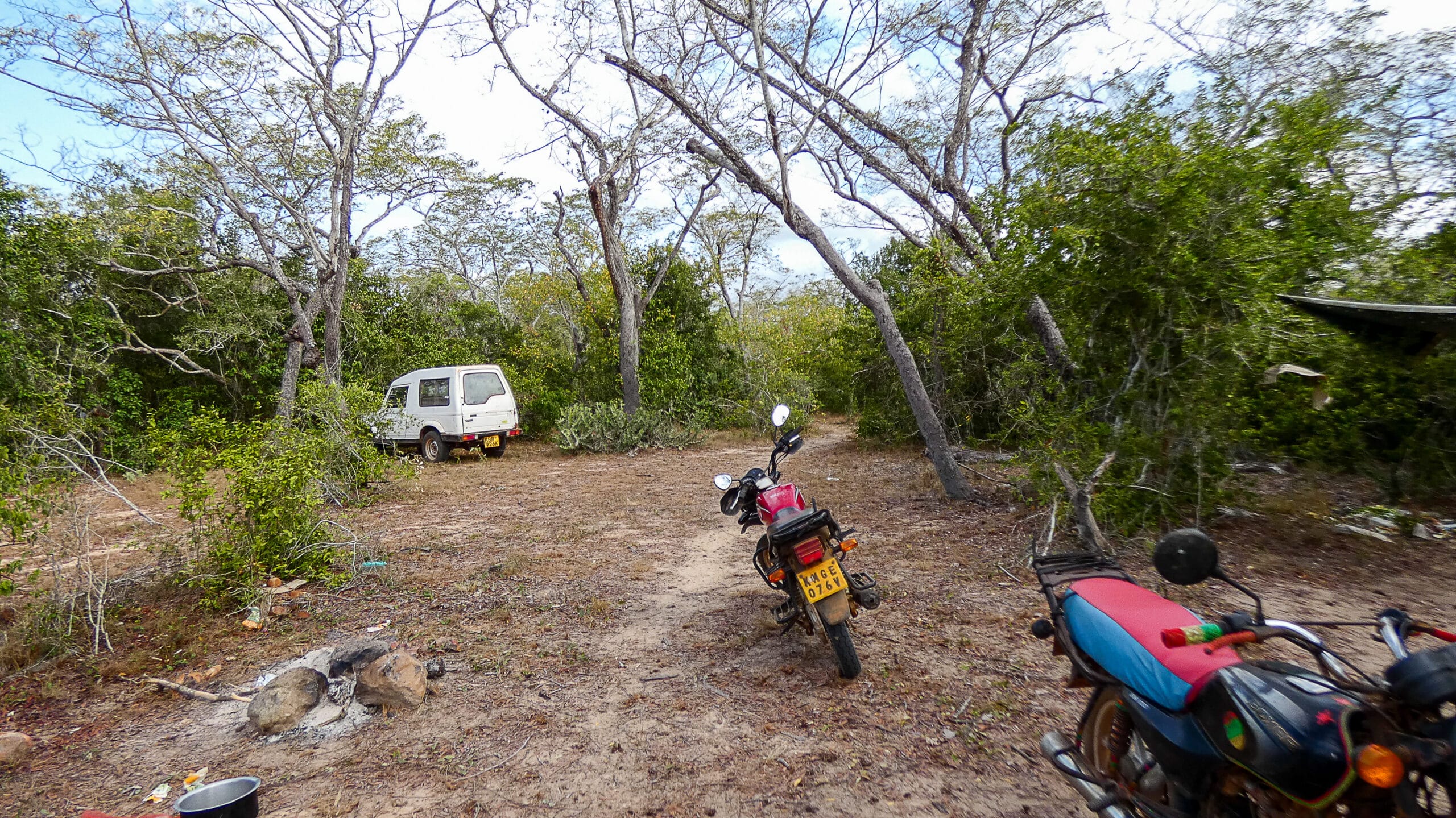
Early the next day we all gathered to have breakfast and had a brief planning session before setting out. Having been joined with Samson Katisho and Werehi of the Dakacha team, we resolved to split the group into two: Lennox Kirao, Mwadime and Werehi in the first while Samson Katisho, Humphrey Shume and somedays Cynthia Mwihaki (working on butterflies and moths) in the second. The first day was purely a learning session having had to experience the full embrace of the sun; somedays going up to highs of 39C. We had to change our departure hours from the camp to an earlier time to maximize on the time before it got unbearably hot.
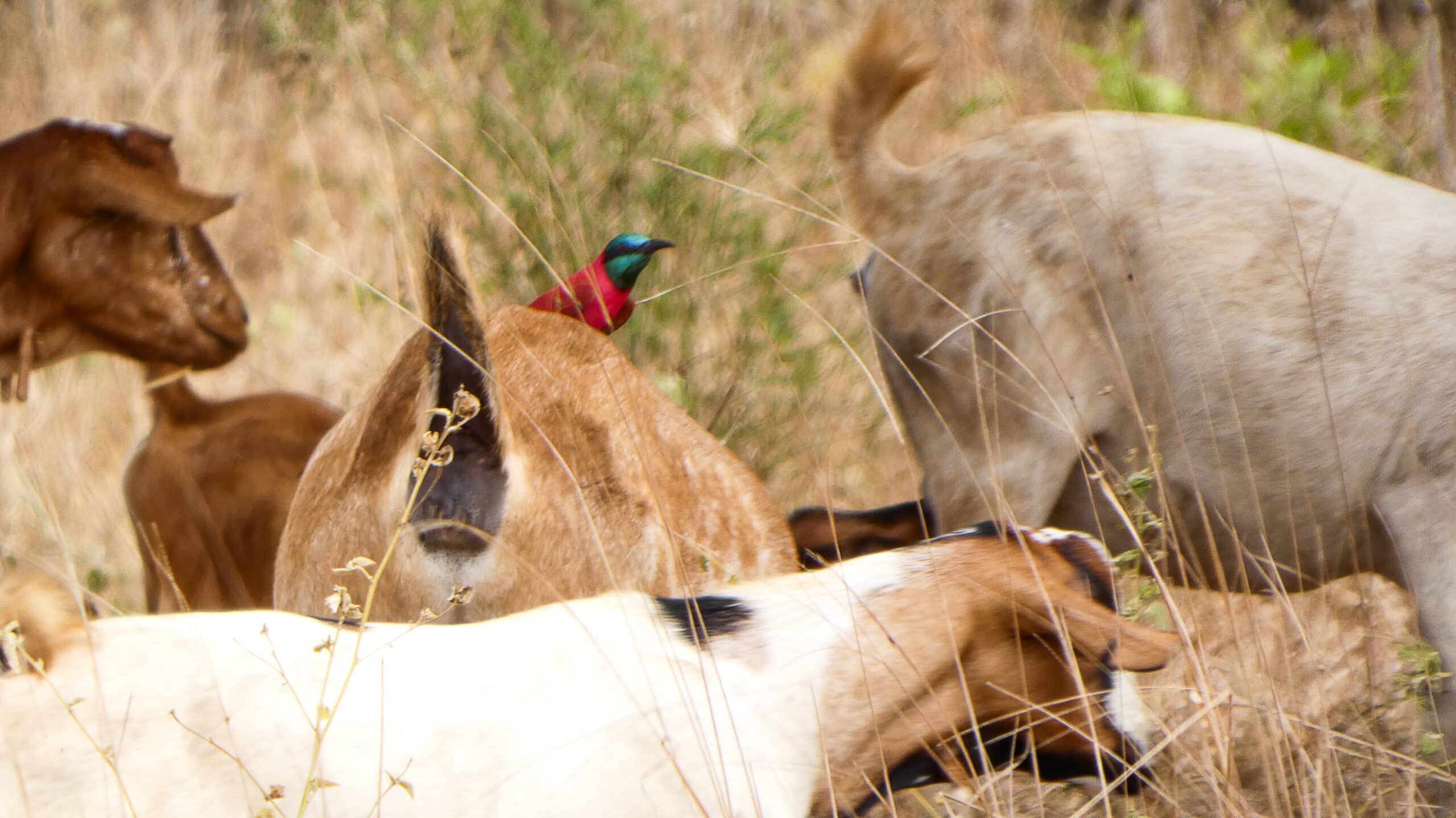
The teams traversed through the area as defined by a buffer zone and project grids, with the first days dedicated to the outermost regions of the defined study area, with two sessions per day. The morning sessions were dedicated to the far and outermost ends running from around 7am to 2:30pm while the evening session ran from around 4pm to 6:30pm and mostly on foot covering areas closer to the camp. The target data was the habitat and any changes in the dominant vegetation cover was recorded. With the guidance of a pre-established list of threatened tree species, the location, level of destruction and the dominance of these target species was recorded.
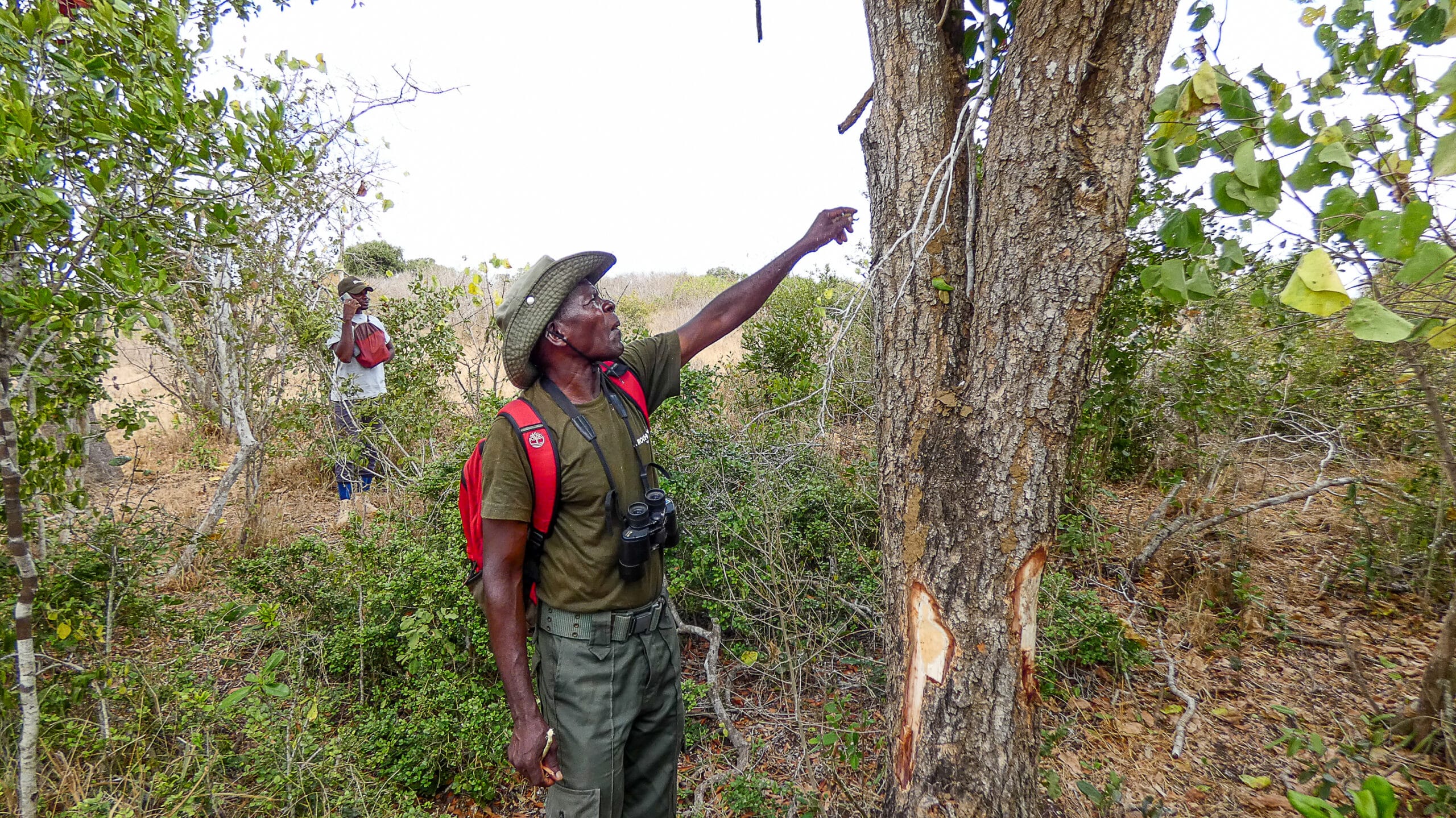
Major threats to the general ecosystem were observed to be both natural and anthropogenic in nature. Long drought spells have been a challenge for reforestation efforts. Anthropogenic factors on the other hand were observed to be the main threats to the indigenous species. These included timber and firewood harvesting, charcoal burning, uncontrolled farming and herding. Old and recent charcoal kilns were observed across the study area with most active sites being those outside the protected Dakatcha Natural Reserve by ARocha Kenya. The overexploitation of some trees for carvings was also evident with most of the affected species being Mhuhu (Brachylaena Huillensis). The invasion by nomadic pastoralists in search of water and pasture has posed a major challenge and mostly to the young and regenerating indigenous tree species across the land. The remaining blocks of Mfunda (Cynometra webberi) are diminishing at an alarming rate as the places they thrive well are targeted for their suitability in agricultural activities, specifically pineapple farming.
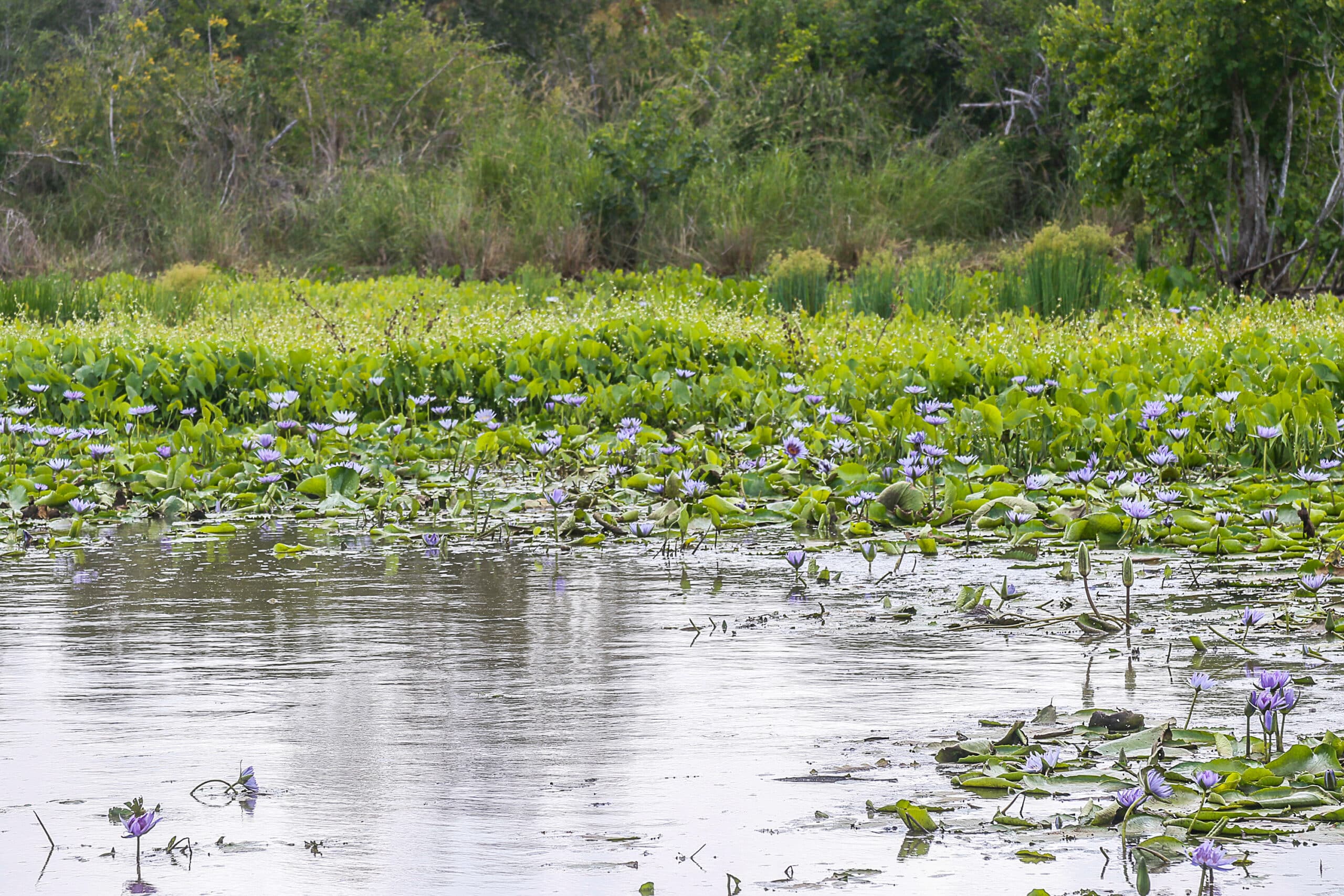
The area of study also had a number of spectacular wetlands that provided home for different bird species. Sighting of a number of wild mammals that inhabit the woods was breathtaking with the animals including the Dik-dik, elephant shrews and bush babies. Moreover, different snake species were observed during the study period.
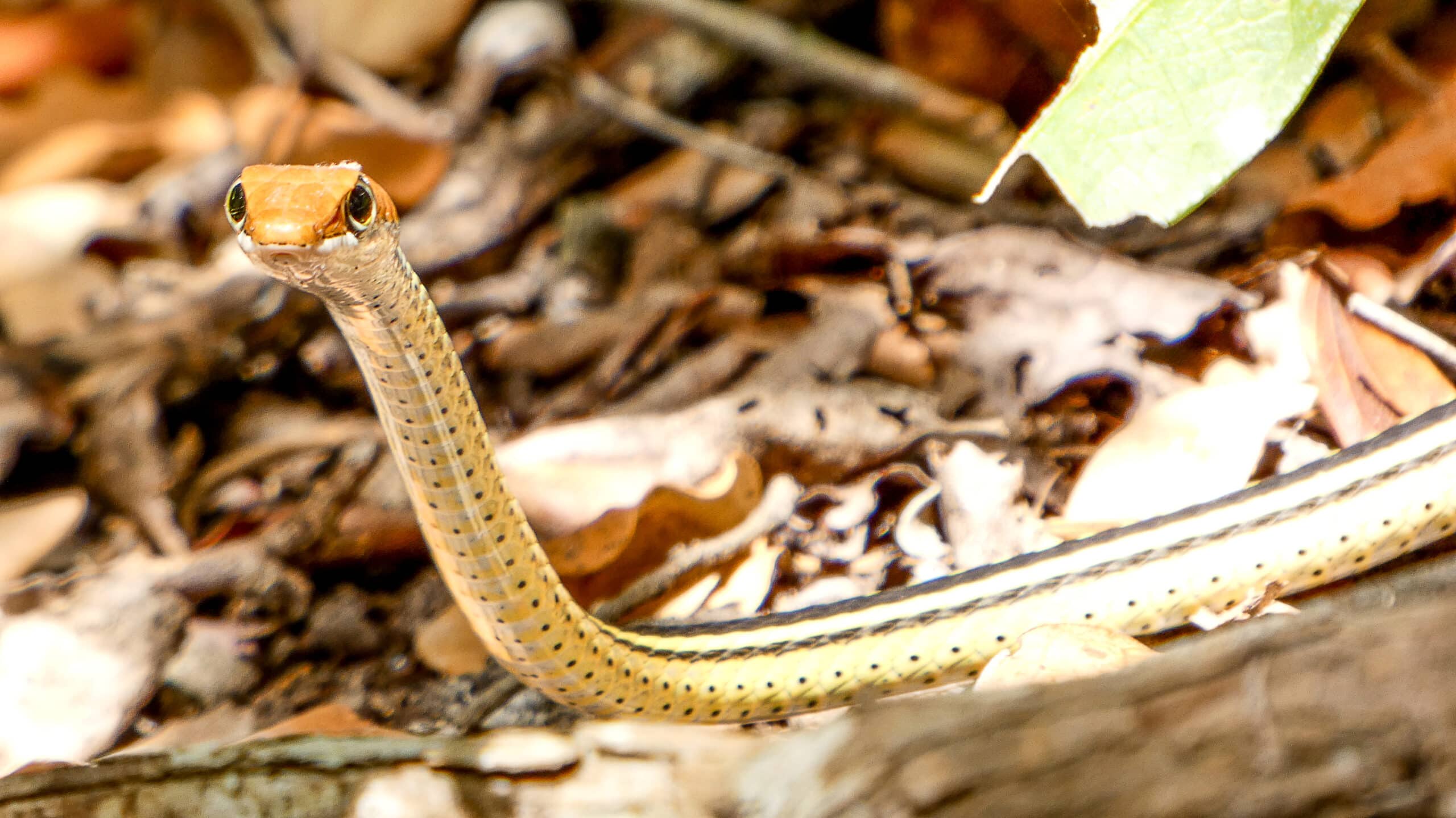
The Dakacha Woodlands is a rich ecosystem that is home to countless varieties of flora and fauna in Kenya. Its composition of unique indigenous tree species has, for many years, stood out among the valuable ecosystems of the Kenyan coastal strip. However, this has made it a target in a struggle to meet the ever- growing demands on tree products. It has been noted that overexploitation of the indigenous trees has increasingly become unsustainable and has placed some of these species in a risk of extinction. This has consequently affected the natural habitat of some of the different fauna life. A Rocha Kenya, in an effort to counter these threats, has been conducting surveys and studies to§ understand the extent of the exploitation and the location of the different and critical habitats. These studies form the basis of decision making and guidance in execution of rehabilitation plans to protect this critical ecosystem.
